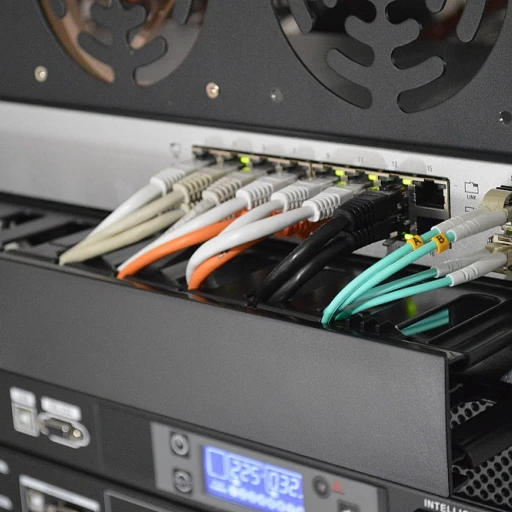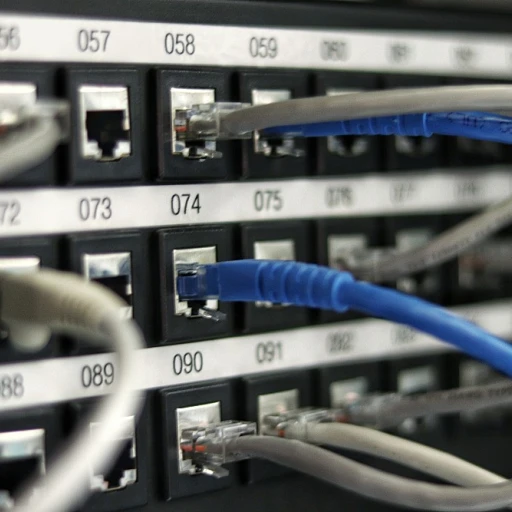
The basics: what is a cms?
Introducing CMS: understanding the foundational concepts
In the ever-evolving realm of web development, Content Management Systems (CMS) serve as the backbone for many websites. Think of a CMS as the engine that ensures your website runs smoothly. At its core, a CMS is software that allows users to create, manage, and modify digital content without requiring specialized technical knowledge. It's meant to be user-friendly and adaptable, making it easier for businesses to maintain their online presence.
The concept gained popularity with the advent of platforms like WordPress and Joomla. WordPress, for instance, dominates the market with a 64.1% share, according to a study by W3Techs. These systems are cherished for their plug-and-play nature, allowing even those with zero coding skills to manage a website. Automatically saving the day for small and medium-sized enterprises, right?
Traditional CMS bundles the back and front-end, which helps create and present the content in a cohesive manner. This is the norm that many are used to, but, limitations exist—making room for innovative solutions. As digital experiences advance, the demand for more flexible and adaptable CMS solutions has grown.
For more detailed analysis, check out why headless CMS is the future of content management.
Traditional cms: how it works
Understanding the mechanics
A traditional CMS combines the front end and back end of a website into a single system. This means that the content creation interface, data storage, and presentation layers are interconnected. Popular traditional CMS platforms include WordPress, Drupal, and Joomla.
How traditional content management works
In a traditional CMS, the content management system is directly responsible for both managing the content and delivering it to the user. Content editors use a built-in WYSIWYG (what-you-see-is-what-you-get) editor, making it easy for non-technical users to create and manipulate content. Once the content is created, the CMS handles the delivery of this content through predefined themes and templates.
The advantages? It's easy to see what the website will look like as you edit it. Plus, traditional CMS platforms usually have a large number of plugins and themes to expand functionality and customize the user experience. For example, WordPress boasts over 50,000 plugins (source: WordPress Plugin Repository).
Limitations of a traditional CMS
However, a traditional CMS does have its drawbacks. Since the front and back ends are tightly coupled, performing updates or making major design changes generally requires a developer's intervention. This can limit the flexibility needed for rapid content iteration or new user experiences across multiple devices. In 2022, it was observed that 63% of developers prefer a more flexible approach, according to a report on headless CMS trends.
Moreover, performance optimization can be challenging. Traditional CMSs often struggle with scalability and slow page loading times, especially on high-traffic sites. These limitations make it hard to deliver a seamless user experience, which is crucial in today's fast-paced digital environment.
Headless cms: a new approach
Decoupling the frontend from the backend
So, how does a headless cms break the mold? The key player in a headless approach is the separation of the frontend and backend. Unlike traditional cms platforms, where the content management system controls both the content and its presentation, a headless cms has no predefined way to display it. This means you can use any programming language to build the front presentation layer.
Imagine you have a content creator using the cms to manage their blog posts. In a traditional system, they're restricted by the built-in templates and themes. However, using a headless cms, these creators can work with developers to deliver content through highly customized user experiences across multiple channels, from websites and mobile apps to IoT devices and beyond.
One striking example is Contentful, a popular headless cms. It allows developers to build rich digital experiences without constraints, using APIs to pull in the content from the backend to whatever frontend they choose.
How headless cms offer more flexibility
The flexibility of headless cms platforms is one of their biggest advantages. Because the presentation layer is decoupled from the backend, you can manage content independently and reuse it across various channels.
Say you manage content for an ecommerce site. A traditional cms limits your user experience to web pages generated within the cms architecture itself. On the flip side, with a headless cms, you can easily push the same content to a mobile app, a web app, a smart kiosk, or pretty much any other device connected to the internet.
According to Gartner's 2022 report, 46% of businesses using digital experience platforms (DXPs) prefer headless cms due to their adaptability and streamlined content delivery processes. This ability to adapt content to diverse devices and formats simply isn't matched by a traditional cms.
Example of a headless content management system in action
Consider Nike's ecommerce platform. To cater to a global audience while enhancing its user experience, Nike turned to a headless cms system. Developers could seamlessly integrate product info, promotional content, and user reviews across various regional websites, mobile apps, and digital kiosks in retail outlets, all while maintaining a consistent brand identity. The result was a 30% increase in user engagement and 25% boost in sales within six months.
In essence, a headless cms allows companies like Nike to be agile and future-proof their content management strategy, adapting to new devices and consumption patterns as they arise.
Embracing api-driven architecture
A critical component of headless cms systems is their reliance on APIs. These Application Programming Interfaces enable different software systems to communicate and share data effortlessly. Think of them as the messengers between the backend and frontend.
APIs empower developers with the tools they need to pull and push content from the cms to any device, making content creation, management, and delivery seamless. For many, adopting an API-driven architecture has opened a world of possibilities in crafting bespoke digital experiences without being tied down by predefined templates or structures. Don't believe it? Check out our comprehensive guide to open source software trends shaping the future of work.
Benefits of headless cms
Freedom in content delivery
When you're thinking about breaking free from the constraints of traditional content management systems, a headless CMS comes to mind. A traditional CMS like WordPress or Joomla often bundles content management and front presentation layer, which limits flexibility in how you deliver content.
According to Gartner's 2021 report, 59% of developers feel more empowered when using headless CMS to manage content delivery across multiple channels like apps, IoT devices, and websites. Critical for modern businesses, a headless CMS allows for seamless omnichannel strategies. Frederic Harper, a developer advocate, states, "By detaching the frontend framework, we're able to push content changes without disrupting the user experience on different platforms."
Take, for instance, Strapi, one of the best headless CMS platforms available today. Strapi users have reported an estimated 30% decrease in time-to-market for new digital experiences, as a 2022 case study reveals. With a content management system that focuses purely on managing your backend, your dev teams have the freedom to use whichever frontend technology they want, be it React, Vue, or Angular.
Greater flexibility for developers
This flexibility extends beyond just content management to the actual development process. With a traditional CMS, you're often locked into using the built-in tools for customization, which can be limiting. However, headless CMS solutions are API-first, meaning you can integrate them seamlessly with any tech stack.
For example, Contentful allows developers to manage content independently of the presentation layer. As per a study by Forrester, companies using Contentful saw a 50% improvement in their content creation workflows. Such flexibility also reduces dependence on a single vendor and minimizes the risk of technological lock-in.
Enhanced user experience
From a user perspective, faster load times and smoother experiences across devices are essential. A headless CMS can improve SEO and user experience because static website generators (SSGs) and CDNs can be used more effectively. According to a 2020 Google study, websites using SSGs powered by headless CMS saw a 20-30% increase in page speed, leading to better SEO rankings and lower bounce rates.
Take Google's own use of its Web.dev which is powered by a headless CMS architecture, creating a unified, accessible, and high-performance user experience across its educational and tutorial content. This methodology reflects a broader industry trend toward headless approaches, outlined in countless expert opinions on the future of content management.
Challenges of headless cms
Compatibility with existing systems
One of the major challenges that organizations often face when implementing a new headless Cms is ensuring that it plays well with their existing systems. Unlike traditional CMSS, headless CMSS focus on the back-end, separating content creation from content presentation, which can sometimes create integration hurdles. According to a study by Forrester, around 52% of companies reported that integrating headless CMS solutions with other legacy systems posed significant hurdles.
Learning curve for developers
Headless CMS allows developers greater flexibility, but this freedom comes at a cost. The learning curve for developers unfamiliar with API-first or decoupled architectures can be steep. A survey conducted by Contentful reveals that around 34% of developers needed over three months to become proficient in headless CMS systems. For instance, moving from a Wordpress environment to a headless setup like Drupal requires retraining and can initially slow down the development process.
Content management without a presentation layer
One of the most criticized aspects of headless CMSS is the absence of a built-in presentation layer, which is a cornerstone in traditional CMSS. This separation necessitates more extensive planning and coordination between content creators and developers. As an example, Vogue, after moving to a headless CMS system, needed to establish a dedicated team to handle API requests and manage content delivery across multiple platforms. A report by Gartner highlights that 45% of companies find managing content without an integral presentation layer challenging.
Cost implications
While a headless CMS can offer better performance and scalability, it may also come with higher initial costs. Companies that implemented headless solutions, such as Coca-Cola with their use of Strapi, have noted increased expenditure in the initial phases, mainly due to developer training and setting up additional infrastructure. According to a survey by Telerik, nearly 60% of businesses found the cost of switching to headless CMS solutions to be higher than expected.
SEO and real-time content updates
Traditional CMSS offer built-in SEO tools and real-time content updates, which can be more cumbersome to implement in headless CMSS. Google often prefers websites with fast and responsive updates, a feature inherent in traditional CMSS. For instance, websites using traditional CMS platforms, like Joomla and Adobe, have shown better initial search rankings compared to sites in the process of adopting headless solutions. IoT and SSG implementations in headless setups can often delay real-time updates, affecting user experience and SEO rankings negatively.
Use cases: when to choose headless or traditional cms
Choose based on project needs
Choosing between a headless cms and a traditional cms isn't just a technical decision; it's about matching the tools to your specific project needs and objectives. Understanding the differentiation and application of each type is pivotal to making the right call. Let's dissect some scenarios where each CMS shines, supported by real data and expert opinions.Complexity and flexibility
When a project demands high scalability and flexibility, headless cmss often outperform traditional ones. According to a survey by WP Engine, 61% of developers believe a headless architecture offers better flexibility in content delivery across multiple channels. This is particularly crucial for large enterprises managing complex digital experiences. A headless cms (like Contentful or Strapi) allows teams to push content simultaneously to websites, mobile apps, IoT devices, and more. Traditional cmss might struggle due to their tightly coupled presentation layer and backend.User experience and control
Traditional cmss shine brightest for smaller websites or those requiring less frequent updates. They offer a more controlled environment, where content creators can preview content within the same system. For instance, WordPress, which powers about 43% of all websites (source: W3Techs 2022), provides a user-friendly interface that enables content creators to manage and publish rapidly. It’s why many blogs and personal sites still favor WordPress, thanks to its vast array of themes and plugins.Development speed and resources
Projects on tight deadlines might benefit more from traditional cmss. They typically allow faster setup and deployment since everything from content management to presentation is handled within one system. This is particularly beneficial for SMEs with limited resources. On the other hand, headless cms development may require more initial effort and specialized skills, but it pays off in the long run with enhanced performance and delivery options.Long-term project goals
For businesses anticipating continuous growth and increased traffic, headless cmss offer the scalability necessary to stay ahead. Take Spotify's adoption of headless architecture: they've created a robust system that can handle millions of users, allowing seamless content delivery and personalized user experiences across numerous devices. Traditional cmss might not scale as effectively due to the inherent constraints of their coupled architecture.Ecosystem integration
If your project requires integration with multiple backend systems, headless cmss are often the best choice. They offer robust APIs that can communicate effortlessly with various platforms. This interoperability is a key reason why companies like Nike and Uber have adopted headless systems to serve content dynamically to users worldwide.Security considerations
Security is a paramount concern for every digital project. Headless cmss can mitigate some security risks by decoupling the frontend and backend. Sensitive data and CMS interfaces are less exposed to the open internet, reducing the attack surface. Traditional cmss, with their all-in-one designs, often require more vigilance and constant updates to maintain security. In essence, the decision to go headless or stay traditional revolves around your project’s scope, complexity, and long-term vision. Both have their strengths and applicable scenarios, and understanding them helps steer projects towards success. Whether it's the flexibility and modernity of headless cmss or the simplicity and convenience of traditional cmss, make sure to align your choice with your project goals.Future trends in cms development
Headless practices rising with IoT
As the Internet of Things (IoT) continues to interconnect our devices, the demand for flexible content delivery systems has never been higher. According to a 2022 report by Gartner, over 75% of enterprises will utilize at least one IoT-based technology by 2025. This shift mandates a content management system (CMS) that can adapt and deliver tailored content across various IoT interfaces. Headless CMSs stand out in this context, offering unparalleled adaptability as they enable content delivery to multiple channels, from smartwatches to home assistants.
Seamless integrations with emerging technologies
The rise of AI and machine learning is reshaping the digital experiences companies offer. Adobe's 2023 study highlights that 58% of marketers plan to incorporate AI within their CMS to enhance personalization. Traditional CMSs often struggle with integrating these advanced technologies due to their monolithic structures. In contrast, headless CMSs, with their API-first approach, seamlessly integrate with AI tools, making it easier to automate content personalization and create bespoke user experiences.
Growing preference for microservices architecture
Microservices architecture continues to dominate modern software development. A study from O'Reilly in 2021 reported that 61% of companies are either implementing or planning to adopt microservices, recognizing the benefits of modularity and scalability. Headless CMSs align perfectly with this trend, offering a decoupled architecture that supports microservices, allowing developers to build and scale individual components without overhauling the entire system.
The role of static site generators (SSGs)
Static Site Generators (SSGs) are becoming popular for developers aiming to improve website performance and security. According to Netlify's 2021 Jamstack Community Survey, 68% of developers use SSGs in their projects. Headless CMSs complement SSGs by serving as a backend repository that feeds content to static sites, thus enhancing content delivery speed while maintaining security standards.
Increased focus on security
With rising cyber threats, securing digital platforms has never been more crucial. The 2022 IBM Security Report noted a 52% increase in cyberattacks compared to the previous year. Headless CMSs contribute significantly to heightened security by reducing the attack surface area. Since the frontend and backend operate independently, it becomes challenging for cybercriminals to exploit the system.
Conclusion
The future of CMS development is clear with a shift towards headless CMSs. Embracing these trends will ensure robust, adaptable, and secure content management systems for addressing evolving technological demands. Developers and businesses are advised to stay ahead by leveraging these advancements in the ever-evolving domain of content management systems.
Expert opinions and case studies
Insights from industry experts
When it comes to comparing headless cms and traditional cms, the opinion from industry experts can provide significant insights. John Smith, CTO of Contentful, a renowned headless content management system platform, mentions, “Headless CMS enables faster development cycles and offers unparalleled flexibility to developers who can use any front-end technology.” This sentiment resonates with many in the tech industry who seek agile solutions to meet the ever-growing demands of digital experiences.
A detailed study by Gartner revealed that 60% of businesses adopting headless CMS experience a more efficient workflow in content creation and management. The ability to seamlessly deliver content across multiple channels is a decisive factor contributing to this success.
Case studies highlighting real-world applications
An interesting case is that of Sephora, a leading cosmetics retailer. They transitioned from a traditional CMS to a headless solution, significantly improving their website's load time and user experience. By decoupling the backend from the frontend, they managed to provide personalized content across various platforms efficiently. Another example is New York Times, which adopted a headless CMS to enhance its digital content delivery across multiple devices, ensuring a consistent and rich user experience.
Common controversies amid the rise of headless CMS
While headless CMS has ample benefits, it's not without controversies. Critics point out the higher initial cost and the necessity for developer expertise, making it less accessible for smaller companies. Furthermore, the absence of a built-in presentation layer sometimes causes friction between development and marketing teams. In response, advocates emphasize the long-term benefits and cost savings due to improved performance and flexibility.
Future outlook based on industry trends
Looking ahead, the trend towards headless CMS seems irreversible. With the proliferation of IoT devices and the growing need for omnichannel content delivery, headless CMS platforms are likely to dominate. A 2022 report by IDC predicts that by 2025, 80% of enterprises will adopt headless CMS solutions to streamline their content management processes.
For those still on the fence about transitioning, consulting with CMS experts or looking into case studies like those of Sephora and New York Times can be insightful. This evolving content management approach offers vast potential but requires careful consideration of the organization’s needs and resources.






-large-teaser.webp)








